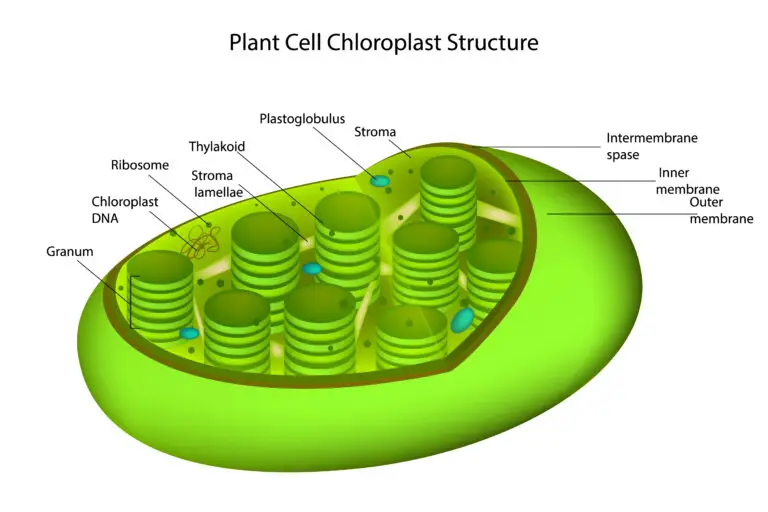Chloroplast

Table of Contents
What is Chloroplast?
A chloroplast is a membrane-bound organelle found in the cells of plants, algae, and some protists. It is the site of photosynthesis, a process through which light energy is converted into chemical energy in glucose.
Chloroplasts contain chlorophyll, a green pigment that captures light energy and plays a crucial role in synthesizing organic molecules. The presence of chloroplasts is a defining characteristic of plant cells and certain photosynthetic organisms.
Structure of Chloroplast
- Double Membrane: Chloroplasts are surrounded by a double membrane, consisting of an outer membrane and an inner membrane.
- Thylakoids: Internal membrane structures called thylakoids are arranged in stacks called grana. Thylakoids contain chlorophyll and other pigments involved in light absorption.
- Stroma: The fluid-filled region surrounding the thylakoids is called the stroma. The stroma contains enzymes and other molecules necessary for the Calvin cycle, the second stage of photosynthesis.
Photosynthesis
Chloroplasts are the primary sites for photosynthesis, the process by which light energy is converted into chemical energy. During photosynthesis, chlorophyll absorbs light energy, which is used to convert carbon dioxide and water into glucose and oxygen. The light-dependent reactions occur in the thylakoid membranes, while the light-independent reactions (Calvin cycle) take place in the stroma.
Chlorophyll and Pigments
Chlorophyll is the green pigment in chloroplasts responsible for capturing light energy. Other pigments, such as carotenoids, are also present in chloroplasts and contribute to capturing light across a broader spectrum.
Autonomous Replication
Chloroplasts have their own DNA and can undergo autonomous replication, similar to the DNA in mitochondria. This characteristic is consistent with the endosymbiotic theory, which suggests that chloroplasts and mitochondria originated from free-living bacteria that were engulfed by ancestral eukaryotic cells.
Role in Plant Cells
- Chloroplasts are essential for the energy balance of plant cells, providing them with the ability to produce their own food through photosynthesis.
- Plants are autotrophs, meaning they can synthesize organic compounds using light energy, carbon dioxide, and water.
Related Links
Organelles
Enzymes
Mitochondria
Photosynthesis